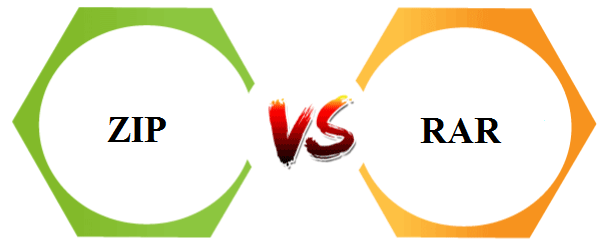Difference between ZIP and RARZIP and RAR are two types of file formats. Large files require huge storage space and are compressed for easy transport. These file formats that are utilized to archive data compression. Data compression is the process of minimizing the data size, and it employs an encoding strategy that encodes data with fewer bits than the original data. ZIP may archive data as well as compress it. A ZIP file can be composed of many files that are compressed or stored without compression. RAR (Roshal Archive) is another file format that allows for file spanning and data compression. In this article, you will learn about the difference between ZIP and RAR. But before discussing the differences, you must know about ZIP and RAR with their advantages and disadvantages. What is ZIP?The ZIP is the archive file format that was mainly designed for lossless data compression. It may include one or multiple files or subdirectories and utilizes a file extension of .zip or .ZIP. It was designed and introduced by Phil Katz in 1989. Initially, it was utilized in PKZIP and PKWARE Inc. After that, it was supported by other software utilities like Microsoft, which has integrated built-in support in versions of Microsoft Windows from 1989. ZIP files are usually utilized for downloading software because all of the components of a software application are contained inside a single file before being transferred. It is very useful in terms of storage space and time, as the file to be transferred may be stored by using less storage space. It also saves download time while retaining the structure and organization of the various files contained within a single zip file. ZIP files may also be utilized to share and download many files at a time, such as a collection of photos. If every image is sent separately by the email, the process will take a long time and effort. As a result, ZIP files are a superior choice for these types of applications. It has various compression and decompression applications that have been developed for producing ZIP files, including Win ZIP, IZArc, Freebyte Zip, 7-Zip, and others. Advantages and Disadvantages of ZIP File FormatThere are various advantages and disadvantages of the ZIP file format. Some advantages and disadvantages of ZIP files are as follows: Advantages
Disadvantages
What is RAR?RAR is an abbreviation for "Roshal Archive". It is essentially a proprietary archive file format. It consists of one or more files or directories and is utilized to store one or more files within a container. Other RAR applications include error recovery and file scanning. Nevertheless, RAR needed specific software for extracting and producing the RAR file, namely WinRAR, as it was the only software licensed to decompress RAR files at the time. RAR file format is utilized for file compressions and transportation, including downloading computer software, file sharing websites, and software distribution software. Apart from shortening download times, RAR compression rates are substantially higher than those of other archive file formats. WinRAR is a 32-bit window-based RAR archiver and manager software. WinRAR's key features include intense general and multimedia compression, enormous filename support, authentication, ZIP compression and decompression, encryption, fixing defective archives, programmable self-extracting archives, support for non-RAR archive formats, and embedding file comments. RAR's filename extensions for data volume sets are ".rar" and ".rev" for recovery volume sets. Previous RAR versions broke a large archive into numerous smaller files, resulting in a "multi-volume archive". Numbers were utilized in the file extensions of the smaller files to keep them in the correct sequence. The first file has the extension ".rar", the second ".r00", and the third ".r01" and ".r02". Key Differences between ZIP and RAR
There are various key differences between ZIP and RAR file formats. Some main differences between ZIP and RAR are as follows:
Head-to-head comparison between ZIP and RARHere, you will learn the head-to-head comparisons between ZIP and RAR files format. The main differences between ZIP and RAR file formats are as follows:
ConclusionBoth ZIP and RAR are compression methods that efficiently compress your files to minimize their size without altering the file's contents. ZIP is the most extensively utilized file format for lossless data compression. It has been around longer than RAR and still accounts for a sizable portion of archive files on the internet. On the other hand, RAR features faster compression, better encryption, and a reduced rate of data loss. ZIP has been around for a while, making it slightly more common than RAR. Although, the RAR file format has an advantage over ZIP in terms of speed and efficiency.
Next TopicDifference between
|
 For Videos Join Our Youtube Channel: Join Now
For Videos Join Our Youtube Channel: Join Now
Feedback
- Send your Feedback to [email protected]
Help Others, Please Share










